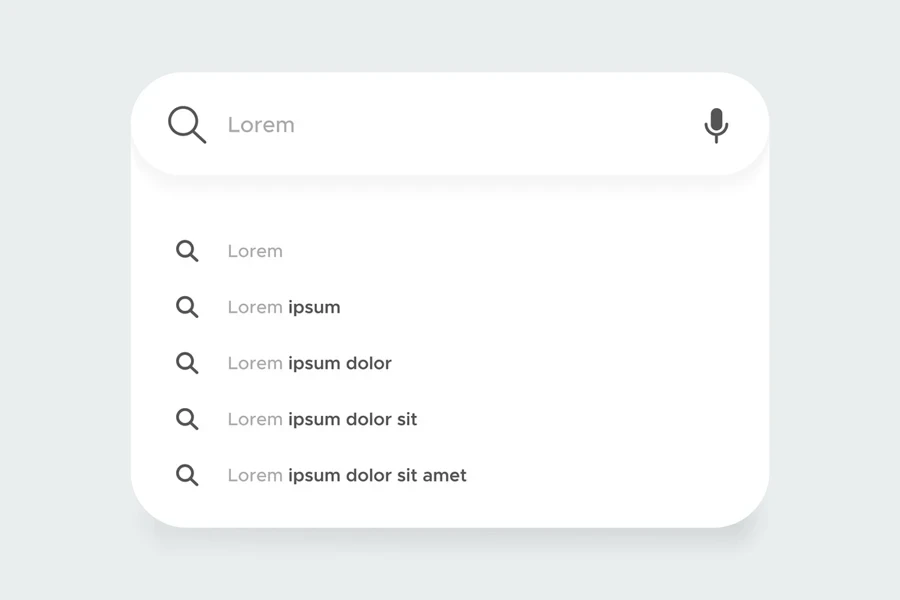Sometimes, trying to get information on the internet isn’t easy. Users may not even know the words or phrases to use, and the search engine may give results they don’t need. But every problem has a solution—and semantic search is perfect for this issue.
This advanced method goes beyond traditional methods by analyzing queries to understand their meaning. This method helps show users exactly what they’re looking for. It considers the meaning of words, connections between ideas, visual data, and other contextual details to provide more relevant outcomes. And if you’re thinking that this will affect SEO, then yes, you’re right.
This article will show businesses how to easily add semantic search to their SEO strategies and get better results in seven easy-to-follow steps.
Table of Contents
What are the benefits of semantic search?
How does semantic search work?
How businesses can add semantic search to their SEO strategy
Wrapping up
What are the benefits of semantic search?

1. Understand synonyms and related terms
Semantic search doesn’t just take keywords at face value. It goes deeper with synonyms and related ideas to get the full picture of what consumers want. It’s how the search engine gives consumers what they want, even when they don’t use clear or exact words.
2. Understand context better
The secret of a semantic search is a natural language processing (NLP) system. This feature takes multiple questions like a conversation, making getting more context on what someone means easier, especially when they ask follow-up questions after getting the wrong results.
3. Supports voice search and conversational queries
The point of semantic search is understanding context and natural language. So, voice searches and chatbot questions will work naturally. It gives consumers simpler ways to find what they want, like speaking or typing.
4. Enhanced user experience
Since semantic search engines look at what searchers mean by connecting words and sentences, they are more likely to generate helpful results. This benefit can easily make users happier with their search experience.
How does semantic search work?
1. NLP (Natural Language Processing)

As mentioned earlier, semantic search uses natural language processing—and that’s where the process starts. These large language models help algorithms break down a question into smaller parts, including how the words fit together.
2. Intent understanding
After processing the words and sentences, the semantic search system determines what the user wants. This part focuses on understanding the reason behind the search.
3. Contextual analysis

While trying to understand the searcher’s intent, the semantic search engine places everything in context. That way, it will provide better results. The system will use nearby words and sentence structures to pinpoint what the user is looking for.
4. Knowledge graphs
Knowledge graphs are like information banks that visually keep data, showing how words, concepts, images, and entities work together. Semantic search engines need these graphs to understand the relationship between the keyword and context.
5. Ranking and relevance scoring

After checking everything, the semantic search engine chooses results based on relevance. It will rank higher if they match what the user is looking for.
6. Machine learning
The process doesn’t end there. Semantic search engines are always improving, thanks to machine learning. They can learn if users are satisfied by looking at follow-up searches. For example, Google sometimes asks users to rate their experience to see how well their searches work.
How businesses can add semantic search to their SEO strategy
Semantic search is taking over, and it’s already affecting search engine marketing. However, it’s not all bad; businesses can follow these tips to update their SEO strategies.
1. Do keyword research with semantic variations

Businesses must first do keyword research if they want to rank high in semantic search results. They should find the main keywords for their target product or service and the related terms, synonyms, and variations. After compiling everything, brands can use them naturally in their marketing material to boost relevance.
2. Craft high-quality content
Keyword research is just one part of it. Businesses must also create content that follows SEO best practices. Whatever topics they cover should be in-depth, covering different angles and related ideas. Most importantly, brands should organize the article in a way that’s easy to follow and understand.
3. Understand the target audience
Now it’s time for some market research. It’s the best way to build buyer personas to understand the target audience better. Then, create content that matches their preferences, behaviors, and why they’re searching.
4. Optimize the content for conversational queries

Another important part is making the content match how people talk and ask questions. The content should focus on answering common questions simply and clearly and, more importantly, using a conversational tone.
One great way to do this is to add an FAQ section. This will improve the website’s search function and help attract more visitors from search engines.
5. Optimize for voice search
Don’t overlook voice search. It usually sounds more natural and detailed than typing, so there’s a high chance it’ll give different results. So, think about how people might ask questions out loud and adjust the content to match those phrases.
6. Use detailed data and schema markup
Whether businesses manage or create a website, they must use on-page SEO strategies like schema markups to gain the upper hand in rankings. Markups help search engines understand what’s on the webpage, increasing the chances of the content showing up as relevant results for the targeted keywords and phrases.
7. Use topic clusters and pillar content
Last, but not least, remember to focus the content on main topics and related subtopics. A good place to start is with detailed pillar pages that cover the core subject while linking them to related content like short explainers or detailed articles. The more thorough the content is, the more likely the search engine will match it to the relevant topics.
Wrapping up
Semantic search entered the marketing world to improve the user experience. It changes how algorithms deliver results by understanding what people want beyond the words they type. Interestingly, semantic search can do all these by thinking more like a person and making educated guesses about search intent.
The best part is that businesses can integrate semantic search into their SEO strategies by following the seven tips discussed in this article. Remember that the biggest search engines are all focusing on semantic search, so don’t get left behind!




 Afrikaans
Afrikaans አማርኛ
አማርኛ العربية
العربية বাংলা
বাংলা Nederlands
Nederlands English
English Français
Français Deutsch
Deutsch हिन्दी
हिन्दी Bahasa Indonesia
Bahasa Indonesia Italiano
Italiano 日本語
日本語 한국어
한국어 Bahasa Melayu
Bahasa Melayu മലയാളം
മലയാളം پښتو
پښتو فارسی
فارسی Polski
Polski Português
Português Русский
Русский Español
Español Kiswahili
Kiswahili ไทย
ไทย Türkçe
Türkçe اردو
اردو Tiếng Việt
Tiếng Việt isiXhosa
isiXhosa Zulu
Zulu